Rose, the king of flowers, is probably the most loved flower all over the world for its unparalleled beauty and unmatched variety. There are so many types of roses that there can be one for every occasion and to match every mood.

What do rose colors signify?
Pink stands for joy and admiration, orange for enthusiasm, peach for modesty, lavender for love at first sight and coral for desire. While a red rosebud symbolizes purity, a white one stands for girlhood.
Roses have been party to the symbolic gestures of romance and friendship since time immemorial. The first ever evidence of rose that comes from Europe is as old as 35 million years and is in the form of a fossil. We also have references coming from ancient Egypt wherein, rose buds have been found in preserved condition along with the mummified dead. However, the flower entered the United states only in the 16th century when the first rose plant was cultivated in North America. Right from its birth in the wild to being one of the main flowering plants cultivated throughout the world, the rose has come a long way. Today, there are numerous species of rose found all across the globe and people are extremely enthusiastic about the flower owing to its fascinating symbolism, alongside other uses.
Since there are many species of roses, along with the hybrids and cultivars, no single defined system of classification of roses exists. However, the various categories in which roses may be classified are:
Hybrid Tea Roses
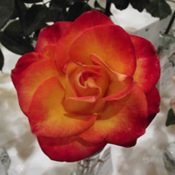
Credit: Stickpen (Own work)/via
Wikimedia Commons (PD)✿ Hybrid tea roses a.k.a '
queen of roses' are everything that a person looks for in his favorite flower. They are beautiful and found in varied colors, amazingly fragrant, and are extremely easy to maintain. This is probably the reason why they are one of the most popular flowers in today's times.
✿ They are a cross between the older '
Hybrid Perpetuals' and '
polyanthas'.
✿ Hybrid teas have long stems (making them excellent choice for cut flowers arrangements and vases), each producing a singular pointed bud at the top end.
✿ These buds bloom into flowers which, sometimes, even measure up to five inches across.
✿ They may have around 60 petals spreading an enchanting fragrance that makes them cultivators'/buyers' favorite.
✿ The plants are about four to six feet in height.
✿ Till date, they have been cultivated in almost every color, ranging from white, red, yellow, purple, pink, orange and so on. Interestingly, these flowers are also found in double colors, which further adds to their beauty.
✿ The most popular hybrid tea rose is the '
Peace' which has yellow petals with pink borders.
Floribunda Roses
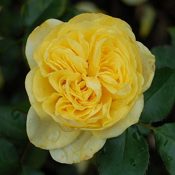
Credit: Huhu.Huhu
(at de.wikipedia)/Wikimedia
Commons (PD)✿ Floribunda means "many-flowering" in Latin.
✿ They are a cross between hybrid teas and
polyanthas and thus, bear features of both the parent species.
✿ Floribunda roses exist in a wide range of colors (some flowers even have two colors), much like hybrid tea roses. On the other hand, they blossom in clusters of medium-sized blooms all through the season much like
polyantha roses.
✿ Because of their clustered blooming pattern, they are primarily used for landscaping purposes. For instance, they are used to make flower beds for public parks and the like.
✿ They are also used in decorating vases, or as hedges and borders.
✿ Flowers may either resemble modern hybrid teas or older
polyanthas, or may possess the characteristics of both.
✿ Because they are essentially bushes, they are generally about two to four feet in height.
✿ The first ever floribunda rose was cultivated by a Danish breeder called Dines Poulsen in 1907 and was named
Rödhätte. This blossom with dark pink shade was extremely pleasing to the eyes.
✿ In subsequent years, many more varieties were introduced and floribunda roses became popular the world over.
Grandiflora Roses
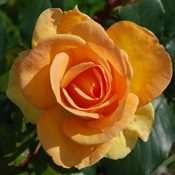
Credit: Huhu. (selbst fotografiert
im Rosarium Uetersen)/via
Wikimedia Commons (PD)✿ Grandiflora, in Latin, means "bearing large flowers".
✿ As the name suggests, grandiflora roses are large in size and are a cross between hybrid teas and floribundas.
✿ One can witness their recurrent blooming throughout the season in all sorts of colors, although some varieties lack fragrance.
✿ The grandifloras were introduced in the middle of the 20th century, and are ideally bigger in size than both floribundas and hybrid teas.
✿ Moreover, the shrubs stand about six to eight feet tall.
✿ Much like hybrid teas, grandifloras are also solitary flowers that grow at the tip of a single stem. However, since these stems are placed in small clusters of three to five, these flowers seem to have a clustered appearance.
✿ They are used typically, for hedges and for mass color effect.
✿ They are also excellent choice for cut flowers.
✿ From the 1950s to the 1980s, grandifloras were one of the main choice of buyers and cultivators. However, after 1980s, their popularity seemed to diminish to a great extent, whereas that of its parent species seemed to rise.
Climbers and Ramblers
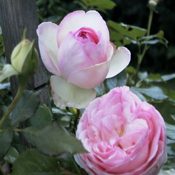
Credit: Florian Moeckel (Own
work)/via Wikimedia Commons
(PD)✿ The climbers and ramblers are those varieties of roses that ornament and beautify any garden or landscape.
✿ They have extraordinarily long and flexible branches as compared to normal shrubs and bushes.
✿ Most climbers and ramblers grow anywhere between eight to twenty feet in height.
✿ However, a point worth noting is, like the other true climbers or 'vines', they do not fasten themselves to the supports on their own. On the contrary, they have to be attached to the supports manually.
✿ Nowadays, climbers and ramblers are clubbed together into one category although, technically, they are different.
✿ One of the major differences lies in the fact that climbers produce a perennial bloom, whereas the ramblers bloom only once a year.
✿ Because of their long and flexible stems, they are used primarily for decorating walls and fences.
✿
Rosa filipes or the
Kiftsgate rose is considered to be the largest climbing rose in the U.K. It climbed up to a height of fifty feet into an old copper beech tree. The climber gets its name from the house, in whose garden it was found in 1951.
Miniature Roses
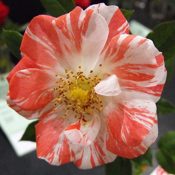
Credit: Stickpen (Own work)/
via Wikimedia Commons (PD)✿ Miniature roses are 'true' roses which are pruned in such a way that they remain small in size so that they suit the space they are meant for.
✿ They exactly resemble their original larger counterparts in each and every aspect, right from bud, bloom, scent, color and so on.
✿ They are available in a variety of hues and shapes and do not fail to captivate people even though they are small.
✿ They grow only about twelve to eighteen inches tall, and are ideal for pots and hanging baskets.
Old/Antique RosesThere are many varieties/classes of these roses and all of them existed even before 1867, the year in which the hybrid tea rose was introduced to the world. While most of them are garden roses, many of them are also wild species of the genus
Rosa. Some of them are as under:
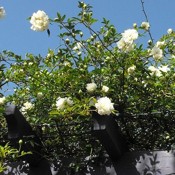
Credit: Stickpen (Own work)/
via Wikimedia Commons (PD)✿ Alba: The alba roses are white in color and are technically one of the oldest garden roses. These flowers bloom once every year in spring. They mostly have white or pale pink-colored flowers bearing a strong fragrance.
✿ Damask: The damasks that bloom only once in summer are known as 'summer damasks'. There are also 'autumn' or 'four seasons' damasks that bloom during the fall. They have more vicious thorns than many other rose types. They bear strongly scented flowers, and were first discovered in 1254.
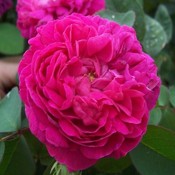
Credit: Florian Moeckel (Own
work)/via Wikimedia Commons
(PD)✿ China: As evident from their name, China roses were grown in East Asia, and particularly in China. They bloom repeatedly in summer and in late autumn. The flowers also tan with time. They are smaller and less fragrant than other roses and bloom poorly.
✿ Bermuda Roses: These roses were found to be growing in Bermuda for about a century. They are highly resistant to plant diseases that tend to destroy the plants in hot and humid climates. These roses are often referred to as 'mystery roses' owing to the fact that there are no evidences whatsoever regarding their origins.
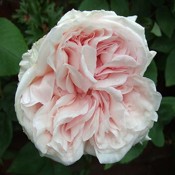
Credit: Jasper33 (Photographer)/
via Wikimedia Commons (PD)✿ Bourbon: These roses are said to have originated off the coast of Madagascar. These roses have semi-climbing shrubs and a purple-colored tinted cane. They are probably the result of a cross between the autumn damask and the old bush China rose.
✿ Noisette: The Noisette was a result of a cross between the China rose's '
Parsons' Pink' and the musk rose. It produces huge cluster of roses that bloom from spring to fall.
✿ Moss: The moss roses are variants of centifolia roses and thus often have cabbage-like patterns while some of them have damask roses as their second parent. They flower only once, although some moss flowers do exhibit repeated blooming.
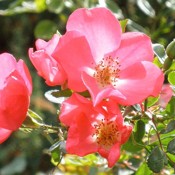
Credit: Javier martin (Own work)/
via Wikimedia Commons (PD)✿ Gallica: The Gallica roses a.k.a.
Rose of Provins come from the Central and Southern parts of Europe and from Central Asia. They bloom only once in summer. These roses come in shades of red, crimson, maroon and deep purple.
✿ Centifolia: Centifolia are also called cabbage roses due to the globular-shaped flowers. These flowers are a result of the damask roses crossed with alba roses. They all flower only once. Their name 'centifolia' is derived from the notion that they bear 'one hundred petals'.
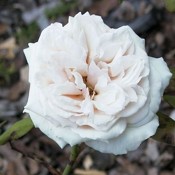
Credit: Florian Moeckel (Own
work)/via Wikimedia Commons
(PD)✿ Portland: These roses are the result of a cross between the first China roses and their European counterparts. Named after the Duchess of Portland, it is the first rose to have repeated-flowering pattern ever. The plant is short and shrubby.
✿ Tea: Tea roses is the result of crossing of China roses with various Noisette and Bourbon roses. They are more tender as compared to the other garden roses. Their color range includes yellow, white and pink shades. The petals tend to roll back at the edges, and therefore the one in the middle has a pointed tip.
Wild Roses
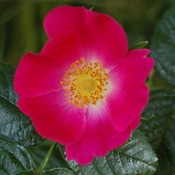
Credit: Huhu.Huhu
(at de.wikipedia)/via Wikimedia
Commons (PD)✿ Wild roses are those roses which grow on their own and do not need any care.
✿ They are the original 'true roses' created by nature and possess properties which protect themselves from diseases and other external factors.
✿ Today, there are around hundred species of wild roses existing in the world, and almost all of them unanimously have only one whorl containing five petals.
✿ Botanists call them 'species roses' and they are found in a wide array of colors which further enhance their beauty.
✿ The plants have dark foliage and thorny stems and produce either solitary or clustered blooms.
✿ Some of the wild rose species such as
Rosa rugosa (Rugosa rose) and
Rosa canina (Dog rose) are quite popular not only with botanists but also with gardeners.
✿ A lot of hybridization of wild rose species has also taken place over a period of time which has given way to a number of new and beautiful rose species.
There is probably no treatise that boasts of mentioning all the kinds of roses that exist in the world. With every new research, a new variety of rose comes into existence, thus broadening the horizons even more. Perhaps, this is the reason why rose has been cherished by people from all folds, not only as a flower but as a symbol of love, beauty and perfection.

















